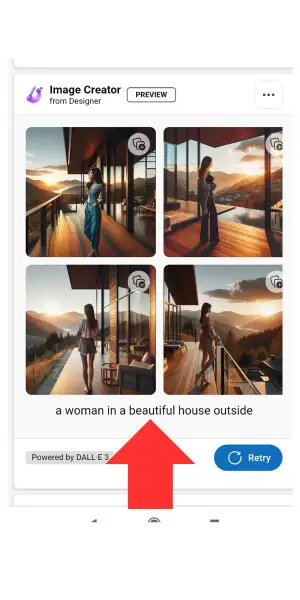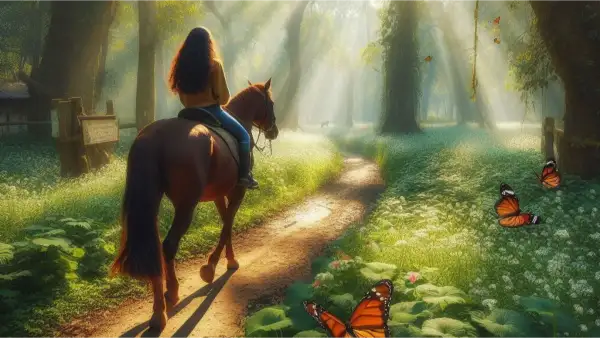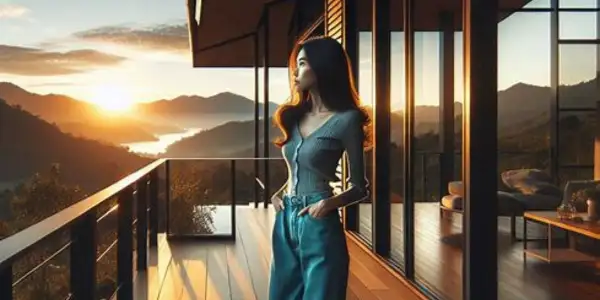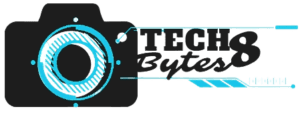Bing AI image generator is part of Microsoft Designer. It is a tool that helps users make professional-looking content easily. Designer is in Word, PowerPoint, and Outlook. It has design ideas, icons, stickers, and an image creator.

Users can use artificial intelligence to create images from words. They do this by using Image Creator in Microsoft Designer. Image Creator is a feature. It lets users describe their ideas in natural language. Then, they can watch their ideas transform into images. The AI can generate images for any purpose. This includes social media, business, or photos.
Users can also explore AI generated images and customize them. Image Creator shows users AI-generated images that match their description. Users can choose the one they like best. Users can also edit the image by changing the colors, fonts, shapes, and other elements. Users can also add text, stickers, filters, and effects to enhance their image.
The AI image generator is free, fast, precise, and versatile. Users do not need to pay anything to use this feature, and they can generate images in seconds. The AI is precise. It can create high-quality images that closely match the user’s description. The AI is also versatile and can handle any style or format, such as realistic, cartoon, abstract, or logo.
The AI image generator uses a generative AI model to create images from words. Generative AI is a type of AI. It can create new content from existing data. This data can be images, text, or audio. The AI image generator uses a generative AI model. It trained on a large dataset of images and captions. It learned the relationship between words and images. The AI image generator can use this knowledge. It makes new images that are relevant to the user’s words.
That’s how bing ai image generator works and what it can do. I hope this elaboration helps you.
How It Works?.

The creators designed the bing AI image generator to be very easy to use. It helps users create images from text. Complex algorithms analyze the input text to understand the image’s desired elements. They achieve this. Once the user provides a description, the AI processes the information. It attempts to generate an image that matches the description closely.
The designers made the system easy to use. It lets even those without design or tech backgrounds use it well. It’s a creative aid. It can help bring ideas to life. It works for personal projects, education, or professional design.
The goal is to bridge the gap between imagination and images. This will help everyone visualize their concepts. You may want to create art or a visual concept. Or, you may just want to see an idea as an image. The AI image generator is a powerful tool to help in that creative process.
How does the AI generate images?
AI image generation is a fascinating process that involves several steps and technologies. Here’s a simplified explanation:
Training
Training the AI model involves using a large dataset. It has images and their descriptions. During this training phase, the model learns to recognize patterns. It learns to recognize features and styles in the images.
Understanding Prompts:
When a user inputs a text prompt, the AI uses NLP to understand the prompt’s content and context. It turns the text into numbers. The numbers capture the elements and relationships in the prompt.
Image Synthesis:
AI uses the prompt’s information. It then uses generative models. These include Generative Adversarial Networks (GANs), Diffusion Models, or Variational Autoencoders (VAEs). They use these to create new images. These models use the training data to simulate the distribution. They create images that still look like the training examples. But, viewers have never seen them.
Refinement:
In some models, there are two parts. One creates the image, and the other evaluates it. The discriminator checks if the generated image is realistic enough. It also checks if it needs more refinement.
Output:
The final step is the output, where the AI presents the generated image to the user. This image is the result of the AI’s understanding of the prompt. It can create new visual content based on its training.
The process is complex and uses advanced algorithms. But, the goal is to make it user-friendly. It will let anyone generate images from text.
AI image generation is not just about making an image. It’s about making something that fits the user’s vision. To do this, the AI relies on a feedback loop. It keeps improving the image until it meets a quality threshold.
The AI’s ability to generate images is not static. It evolves over time as it gets exposed to more data and as developers refine the algorithms behind it. The AI can generate better images over time. This means the images have better quality, diversity, and accuracy. So, the AI is becoming a more powerful tool for creative expression.
Moreover, the AI’s design often includes mechanisms. They ensure the images are unique and diverse. The images reflect the range of human creativity. This is crucial. It allows for many outputs. They cater to the needs and preferences of users.
In short, AI image generation blends technology, creativity, and user interaction. It creates a tool that turns text into images. It shows how much AI and machine learning have advanced. Users can limit their uses only by their imaginations. AI image generation is for art, design, and exploring. It opens up a new realm of options.
Key Features
Ease of Use: With no downloads or complex software required, users can start creating images immediately.
Cost-Effective: The service is free, allowing for unlimited creativity without financial constraints.
Speed: The AI quickly generates images, saving valuable time for users.
Precision: The AI’s ability to closely match the provided descriptions ensures high-quality results.
Versatility: The tool is capable of handling various styles and formats, catering to a wide range of creative needs.
Applications The Bing AI image generator is ideal for creating social media visuals, business projects, and personal photos. It is also versatile for editing photos. It offers users a full set of tools for their creative projects.
How can I use bing ai image generator?
Here are the steps you need to follow:
Open Image Creator in Microsoft Designer. You can access it from the Insert tab in Word, PowerPoint, or Outlook. Or, you can go to this link and click on Try it now.
Sign in with your Microsoft account if prompted. You need a Microsoft 365 subscription to use this feature.
Describe the image you’d like to create in the text box. You can use natural language to express your ideas, such as “a blue sky with clouds and a rainbow” or “a logo for a bakery with a cupcake and the name Sweet Treats”. You can also specify the size, format, and style of your image, such as “a square PNG image with a cartoon style”.
Select Generate. The AI will create an image based on your description and show it to you. You can also see other AI-generated images that are like your description by clicking on Explore.
Customize your image. You can edit the image by changing the colors, fonts, shapes, and other elements. You can also add text, stickers, filters, and effects to enhance your image. You can use the toolbar on the right to access these options.
Save and insert your image. When you are happy with your image, you can save it to your device or cloud storage by clicking on Save. You can also insert it directly into your document, presentation, or email by clicking on Insert.
That’s how you can use bing ai image generator to create stunning images from words. I hope this explanation helps you.
What are some tips for getting the best AI images?

Here are some suggestions:
Detail your vision. The more specific you are with your description, the better the AI can capture your vision. Think about the mood, colors, themes, and any key elements you want in your image. For example, instead of saying “a landscape”, you can say “a snowy mountain landscape with a lake and a cabin”. This will help the AI generate an image that matches your idea more closely.
Consider composition. Composition is the arrangement of visual elements in an image. These include shapes, lines, colors, and contrast. A good composition can make your image more appealing and effective. You can use basic composition principles. These include the rule of thirds, symmetry, balance, and focal point. They can guide the AI in creating your image. For example, you can say “a logo with my company’s name in the center and a circular shape around it.” This will create a balanced image.

Refine and experiment. If your initial output isn’t what you’d envisioned, adjust and re-prompt. Experiment with different descriptions. Changing themes, style, or specific elements can refine your image. For example, you can change “a snowy mountain landscape with a lake and a cabin” to “a sunny mountain landscape with a river and a tent.” Then, see how the AI responds. You can also use the customization options to edit your image further.
These are some tips for getting the best AI images with bing ai image generator. I hope this explanation helps you.
How can I ensure my AI-generated images are on brand?
Here are some suggestions:

Define your brand identity. Your brand identity is the look of your brand. It shows its personality, values, and goals. It includes things like colors, fonts, image style, key motifs, and mood and aesthetic. You need to clearly define your brand identity and communicate it to the AI through your prompts. For example, if your brand is playful, fun, and colorful. You can use words like “bright”, “vibrant”, “cartoon”, and “funny” in your description.
Create a set of brand guidelines. Brand guidelines are a set of rules. They help you keep your brand’s visual identity consistent and high quality. They specify how to use your brand elements. These include the logo, color palette, typography, imagery, and tone of voice. You can use brand guidelines to guide the AI’s output. They ensure your AI-generated images are on brand. For example, you can say “use the colors from my brand palette” or “use the font from my brand logo” in your prompt.
Note and recycle successful prompts. When you generate an image that fits your brand, note the prompt you used. Likewise, observe which prompts don’t work and refine them accordingly. A spreadsheet can be a handy way to log successful prompts so you can recycle them in the future. You can also use them as templates or inspiration for creating new prompts. For example, you can say “use the same style as the last image.” Or, you can say “change the theme from winter to spring.”
Conclusion
The Bing AI image generator represents a significant leap forward in digital creativity. AI powers Microsoft Designer. It democratizes design and empowers users. They can now create stunning visuals easily. As this technology continues to evolv
e, we can expect even more innovative features that will further enhance the user experience.
